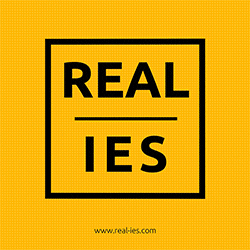3D preview and rendering are not new goals on this blog nor in the development roadmap. I already mentioned them for some weeks and actually, I am working on these since the beginning of Real HDR development. On the initial release day, we all knew that this tool was an experimental project, and it was accepted by users for that. It was very motivating to read supportive messages via email or forums and now it is the moment to move Real HDR to a new frontier, let me say, to a new reality.

Yesterday I got framed while sketching the future raw plans for the development of this utility. Indeed 2018 had been the beginning of this new path and new developers joined PlaySys studio to support me. In 2019 we are going to release user-requested features, R&D suggested features, student-requested features, Virtual Reality module, optimizations and improvements of UI and the manuals, multi-language support, better check out and website involvement, extensions and more.
3D Preview
My focus at the moment is the 3D preview: a simple shader ball with Lambertian material that displays a smooth preview of the lighting situation, superimposing it on the usual PhotoBooth module. Users can activate it and perceive how the environment lighting is going to be. Both SpriteLights and DarkMarks placements will remain the same as before, but I am confident that this new preview will increase the level of the user experience.

Click & Go
The other feature I am working on at the same time is a new way to place lights. I created a raytracing system that is capable to resolve the position and quaternion-rotation of a light source, given a click on a three-dimensional surface floating in a space of a defined radius. Since I am not a programmer but a media designer with a background in mechanical engineering, this is very exciting to me, especially to see it in action with such speed.
The feature name is “click & go“…yeah, I know, but I am looking for suggestions :)…but anyway, this is enabled in PhotoBooth and will let the user click on the point where the light must lit, without struggling about the position or the rotation: Real HDR will do the rest. Of course, “click and go“, 3D preview and the other tools are available at any moment and the RHD parser will manage the task of keeping track of the project state.

You will be able to use these new features when ready, and I scheduled the new release of Real HDR 1.4 for the end of January 2019. Thanks a million for your support and Merry Christmas to everybody!


i am hoping and waiting for true HDR capabilities – at the moment it doesnt have the full dynamic range – when do you think that will happen?
Hello Simone, at the moment the files exported are 32-bits so the space for the High Dynamic Range is already there and it is used pretty well by the PhotoBooth module (the one Real HDR was initially built for). In the last update, the 1.3, we added a new module named SkyLight that is producing “atmospherical sky gradients”. Recently I got contacted by a customer regarding sharp shadows produced by common HDR pictures and not by Real HDR’s output. While inspecting the reasons for this, I noticed that the sky is rendered darker on Real HDR’s display, so the user is tempted in increasing the overall brightness. This leads in a brighter sky value inside the EXR file and, as consequence, a smaller intensity-gap between sky and sun brightness. I also noticed that the solar corona/halo is way too big and this makes it appear as a huge light emitter in the HDR image. Of course, the sun is massive, but we both know that in CGI it should be “small & intense”.
So long story short: in this month of December I was mostly focused in an upgrade for PhotoBooth and some core features, but after the release of version 1.4 I will be solving the SkyLight issues and implement some other possibilities.
Please note that SkyLight is a preview module. My intent was to collect feedback before expanding it and your one is very precious. Thank you!
Just a quick follow up with this work in progress

Here is a sample of the entire dynamic range of the new output in Real HDR 1.5
The useful range is between 0 and -11/-13 stops, while the very last visible brightness appears around -18/19 stops.